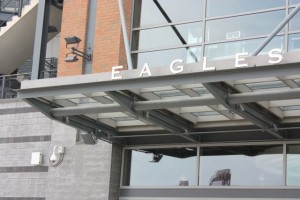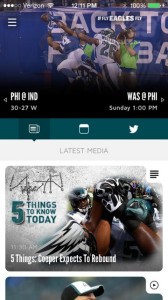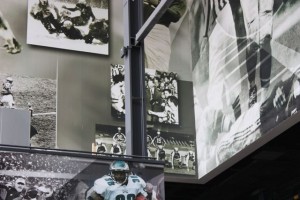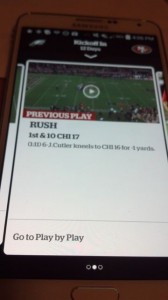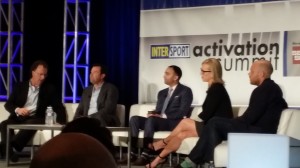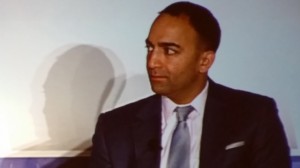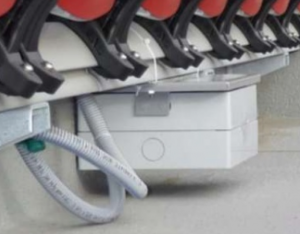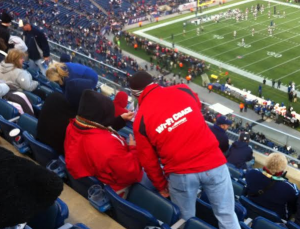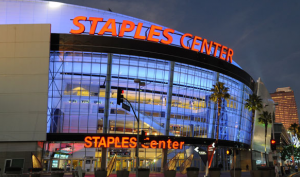Now in the second season of having full-stadium Wi-Fi available for fans, the Eagles’ technology team is pushing the needle forward, much like the high-powered offense head coach Chip Kelly runs on the field. An already advanced stadium app will soon get even more video features, including instant replay, to further enhance the game experience for the 69,176 fans who fill the “Linc” on home-game Sundays.
According to Anne Gordon, the Eagles’ senior vice president for media and communications, there were more than 21,000 fans using the in-stadium Wi-Fi network at the team’s Sept. 7 opening game, a total that surpasssed the 19,671 users on the network at the Eagles’ final game last season, a 26-24 loss to the New Orleans Saints in a wild card game on Jan. 4, 2014.
Along with the growth in user numbers is an even greater jump in the amount of data being used; according to Gordon, the Eagles’ Extreme Networks-powered Wi-Fi network carried 946 Gigabytes of data in the Sept. 7 game against the Jacksonville Jaguars, up from around 400 GB used during the playoff game in January. Unlike some other stadiums with Wi-Fi networks, Gordon said that the Linc network regularly sees fans download more data than they upload — a reflection of the team’s strategy to provide a wide range of custom content for fans to help improve the game-day experience.“We want to help them become better fans, and improve their enjoyment of the game,” said Gordon in a recent phone interview. “That was our vision from the beginning.”
But to get to that vision, the Eagles first had to give fans a way to get the content. That meant using some of the $125 million in recent renovation fees to build out the stadium-wide Wi-Fi network, which Gordon said eliminated past connectivity headaches for Philadelphia fans.
Build it, and show them how to use it
“Prior to the 2013 season, there were real issues trying to connect mobile devices in the stadium,” Gordon said. “You might get a signal, but then walk 20 steps and lose it. When we talked to fans, improving the wireless network [in the stadium] was high on their list.”Working with partner Extreme Networks, which now runs Wi-Fi networks in four other NFL stadiums, the Eagles had stadium-wide coverage ready to go before the 2013 season kicked off. But unlike some venues, which do little to promote their in-stadium networks, the Eagles and Extreme brought some more NFL flavor to their wireless experience in the form of “Wi-Fi coaches,” network-savvy people who roamed the stands in readily identifiable clothing, offering personal assistance to fans trying to connect.
“We put notes in the cup holders the first few games of last season, and then had the coaches with jackets that said ‘ask me’ on them,” Gordon said. That little bit of assistance, she said, spreads quickly.
“If you connect one person, that fan shows six more people in the row [how to connect],” Gordon said. “Our fans took to the network immediately.”
And just in case fans need a refresher, the team’s website has perhaps the league’s best help pages, with simple screen shots showing how to install, open and use the most popular features on the team app.
Out front with app features
As we found out in our recent report on NFL stadium technology deployments, there are many teams with stadium Wi-Fi networks, but the level of application and content delivery varies from team to team. With a feature lineup that includes in-stadium access to the NFL’s popular RedZone channel alongside a live feed from the stadium’s large video boards, the Eagles’ app was clearly among the league leaders when it launched last year. And soon, Gordon said the Eagles will add more live camera views and replay choices to the menu, developments made possible in part by the team’s close relationship with app designer YinzCam Inc.
“We have a unique relationship with YinzCam, and work hand in hand with them [on new developments],” Gordon said. “We’re blessed in that we get a lot of things in our app first.” The Pittsburgh-based YinzCam, which has designed team and stadium apps for a long list of sports-team customers, is a preferred team-app partner of the NFL, which was an early investor in the company.
With a long history of full houses, Gordon said the team doesn’t need to use its network or app strategy to try to put people in seats.“We are continuously sold out, so thankfully we don’t have to sell tickets [with the app],” said Gordon, noting that some fans have had season tickets in their families for several generations. That fact allows the Eagles’ tech team to make their digital strategy “100 percent about improving the game experience,” Gordon said. “We’re giving them a reason to download and consume.”
Not possible without the network
With more than 700,000 downloads of the stadium app so far, it appears as if the Eagles have a winning digital strategy to match the team’s recent on-field successes. Now the biggest challenge may be finding enough Internet bandwidth to keep the fans supplied with the in-game content.
“We are definitely bumping up against our [bandwidth] pipe threshold,” Gordon said. So far, it looks like the campaign to use content to improve the experience at the Linc is working — along with the network that links it all.
“If the [Wi-Fi] network doesn’t work, people get frustrated and don’t use the app,” Gordon said. “The network is what had to happen to make this vision possible.”
